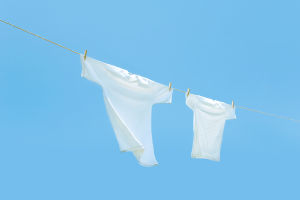The old-style clothes iron is an early tool used for ironing clothes, with a design and function that is more primitive and simple than modern electric irons.
This type of iron usually had no power supply but relied on heating from an external source, such as a stove or coal, to heat the metal base of the iron.
Once the iron reached a sufficient temperature, it was used to iron the wrinkles from clothes through heat conduction.
This iron has a history spanning hundreds of years. Its development progressed from early stone tools to bronze, then iron tools, eventually evolving into the household appliances we are familiar with today.
The earliest ironing tools can be traced back to ancient Roman times when people used heavy objects like stones or metal rods to flatten clothes. As metalworking technology advanced, iron tools began to be used for ironing. By the Middle Ages, the form of iron had evolved into the recognizable metal iron we see today.
These irons were often made of cast iron or copper, were quite heavy, and required a lengthy heating process before they could be used. Once heated, the user had to work quickly and accurately because the temperature of the iron would decrease gradually.
One typical feature of the old-style clothes iron is that it did not rely on electricity. Compared to modern electric irons, it was entirely manual. To heat the iron, housewives in the past would place it on a fire or use a coal-burning iron with a small cavity inside, where burning coal could be placed to maintain the iron's heat.
This method allowed the iron to remain hot for a long time, providing a continuous ironing effect. However, due to the lack of temperature control, this type of iron often results in burns, especially when used on delicate fabrics such as silk or linen.
Although the old-style clothes iron was simple in function, it reflected the importance of ironing clothes as part of daily life. At that time, the neatness and smoothness of clothing were not just matters of appearance but also a reflection of a family's social standing and care.
Many people spent hours heating the iron and pressing their family's clothes. This manual labor required both skill and experience and though the method might seem cumbersome today, irons were essential tools in every household.
As the Industrial Revolution progressed, the old-style clothes irons began to be replaced by electric irons in the late 19th and early 20th centuries. The introduction of electric irons significantly simplified the ironing process.
With an electric iron, users only needed to plug in the iron, and the heating element inside would quickly warm it to the desired temperature.
Moreover, electric irons offered more precise temperature control, allowing clothes made of different materials to be ironed at appropriate temperatures, which helped to prevent the risk of burning.
Despite these advancements, The old-style clothes irons continued to be used in some remote areas or specific circumstances, especially where there was no access to electricity.
The appearance and design of The old-style clothes irons varied, with changes in shape and material over different eras and regions. In Europe, irons were often made from cast iron and were heavy, with handles sometimes made of wood or bone to prevent burns.
In some parts of Asia, such as China, traditional irons were smaller and often decorated with intricate carvings, reflecting the craftsmanship and aesthetic preferences of the time.
Though electric irons have become the standard in modern life, the old-style clothes irons have become objects of nostalgia and are sometimes collected as antiques.
Antique dealers and collectors prize these old-style clothes irons, viewing them as not only household tools but also symbols of cultural and historical significance.
The materials and craftsmanship used to make these irons reflect the technological capabilities and socio-economic conditions of their respective periods. Additionally, their simple design serves as a reminder of the labor-intensive nature of household chores in earlier times.
The old-style clothes irons are functional tools and carry rich historical and cultural meanings. They witnessed the transformation of family life, from the era of tedious manual labor to the age of modern technological convenience.
While it may be difficult to imagine the daily routine of using these irons today, they hold an important place in history. For this reason, The old-style clothes irons are not merely museum exhibits but represent an integral part of our collective history.


